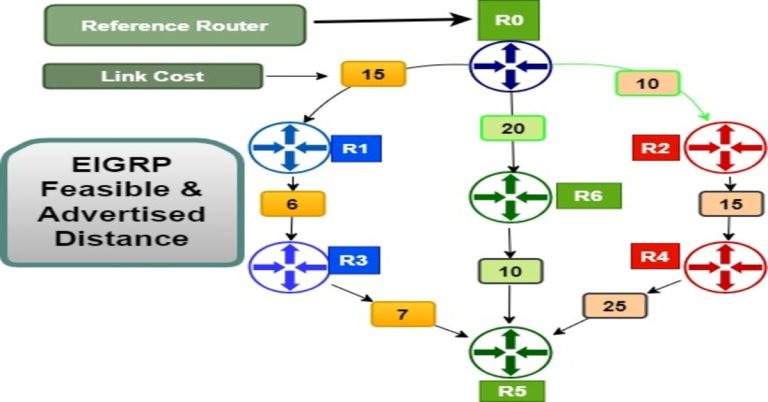Fundamentals of Static and Default Routing in Packet Tracer
Introduction
The process of sending a message from one computer to another located in different networks is called routing. The router performs routing. Static and default routing are the types of routing that are configured manually. Usually, the network administrator configures static and default routes.
Static Routing
Static routing is a mechanism in which the network engineer manually adds the routes to a routing table of routers. It then sends the packets to the destination along the path defined by the network administrator. We also called static route non-adoptive routing.
Why do we use static routing?
- A static route has greater security over dynamic routing protocols because it has no complicated routing algorithms.
- The network engineer remembers every route he configured manually.
- We use static routing protocols as an alternative to dynamic routing protocols.
- Generally, we use it when the network is small or when we prefer security.
Advantages of static routing protocols
Simple: It is easy to configure for a small network.
Low Overheads: Static routing has a lower overhead than dynamic routing. So, it is a low processor intensive.
Low bandwidth: It has low CPU utilization, so it consumes very little bandwidth.
Low Resource: because of its low CPU utilization, it doesn’t require more resources such as CPU, memory, etc
Security: It provides more excellent protection than dynamic routing protocols. The network engineer filters routes based on the destination of traffic.
Default Routing
In default routing, the packets have a single destination. When dealing with a single exit point, we use the default route. The packets choose the default route if there is no specific route in a router’s routing table. Utilize the default route when we do not know the destination network. In IPv4, use 0.0.0.0/0 to represent it, while in IPv6, use::/0.
Advantages
It is less CPU processor intensive than a static route
The default route is easy to set up and maintain
It also requires less bandwidth
Posses small routing table
When multiple network packets are forwarded to a single hop, it is efficient.
Disadvantages
It is not best for an extensive network
Default route support load balancing
It is not fault-tolerant
Lab Topology for static and default routing
Below is the topology for static and default routes. First of all, configure an IP address on all the routers and PCs as given in the topology. Configure the router interface IP as the default gateway of all the PCs. After configuring the IP address on all the devices, ping each device from its directly connected device to check connectivity.

Configure a static route on R1, R2 R3, and R4.

After configuring static routes, this configures the default route on R5.

We didn’t provide any details on the default routing. It will find its destination by itself. The zeroes in the commands meant that they matched all the IP addresses. To check connectivity among all the devices in the topology, we will ping a few devices to check connectivity. Ping from PC1 to R1, R2, R3, R4, and at the last R5 interfaces PCs in R5’s LAN.

The PC0 is successful in ping R2, R3, and R4 interfaces. Now we are going to Ping PC0 from PC2 which is connected to PC5. We configured the default route on R5, so the ping will also check the working of the default route.

We will also check which path it follows to reach PC0 from PC1. The tracer command determines the path.







